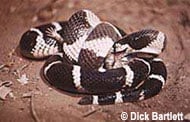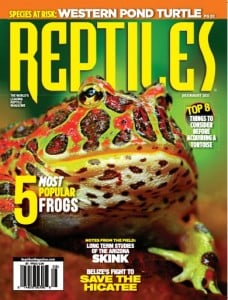California Kingsnake
The California king ranges from Oregon to southern Utah, Nevada, Arizona, California and northern Baja.
The California kingsnake is the most commonly bred and kept kingsnake in captivity.
Cages should be escape proof, complete with water and hiding area. Kingsnakes and milksnakes should be housed separately because they are cannibalistic. Inexpensive enclosures such as plastic shoe or sweater boxes work well if there are ventilation holes drilled in the sides. Aquariums or homemade enclosures also work well if you want to display the snake. A variety of substrates may be used (aspen shavings, corncob-type rodent bedding or newspaper) to keep the animals clean, warm and dry. Care should be taken to ensure that substrate materials do not stick to prey items when the snakes feed.
Kingsnakes will feed on just about anything. They will consume warm-blooded prey such as rodents and birds, as well as cold-blooded prey such as lizards and frogs (in addition to other snakes).
This species adapts well to captivity if kept between 80 and 85 degrees Fahrenheit. Temperature control is important as it maintains feeding response and digestion.
For more information, read our detailed California kingsnake care sheet.

